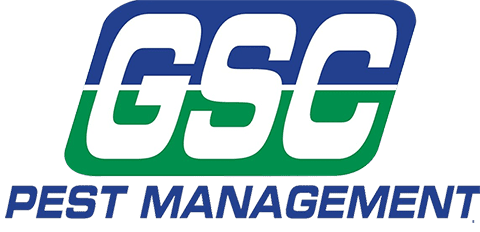Integrated pest Management

At GSC Pest management we believe in using a holistic approach to pest management called Integrated Pest Management or IPM. It is not only important for us to use IPM, but for our customers to understand its purpose and why we do it.
The rise and widespread distribution of synthetic pesticides began after WWII, with DDT being a prime example. This chemical proved highly effective in controlling disease-carrying insects, like those spreading malaria and typhus, which posed significant threats to soldiers. At the time, synthetic pesticides were hailed as “miracle chemicals,” offering seemingly quick and easy solutions to pest problems.
IPM emerged in the 1960’s and 70’s due to rising environmental concerns and early observations of pest resistance. As the negative impact of widespread pesticide misuse became apparent, public opinion began to change, a shift accelerated by influential works like Rachel Carson’s ‘Silent Spring’
Today IPM is widely recognized as a sustainable and environmentally responsible framework for pest management. It prioritizes long-term prevention and uses a combination of techniques, minimizing reliance on chemical pesticides.
Key aspects to this method include
Pest Identification
The accurate identification of target pests is crucial. Once identified, a treatment plan can be developed using what we know about the pest habits and development.
Monitoring and assessment
Regular monitoring will help determine when and where applications may be needed, preventing unnecessary applications.
Prevention
The most effective way to address pest issues is by targeting the factors that contribute to infestations. This includes habitat modification, improved sanitation, and other measures that make an area less desirable for pests.
Thresholds
Setting clear action thresholds ensures efficient pest management by avoiding unnecessary interventions.
Multiple control methods
Pest Control is not about just chemical applications, that is only one of the several control measures that can be implemented to achieve success.
- Mechanical: Physical measures to control pests. Including bug screens, vacuuming, ventilation, traps, etc.
- Biological: Uses natural enemies or predators to achieve control.
- Cultural: Modifying practices to make the environment less favorable. Including upgrading cleaning schedule, crop rotation, etc.
- Chemical: When pesticides are required, a focus is put on low toxic chemicals, utilizing different modes of action to combat the risk of the development of resistance.
Education
The final and most important step of IPM is education. By educating both our technicians and our customers, we empower homeowners with a thorough understanding of pests and their control measures, opening a dialogue and fostering a stronger partnership. This furthers the adoption of sustainable practices through shared responsibility and informed decision-making.
IPM Strategies for Your Home
There are several proactive steps you can take to deter pests and protect your home:
Physical/Mechanical Control
- Install a crushed stone border around the foundation
- Trim trees and shrubs away from the house
- Eliminate wood-to-soil contact to prevent termites and water damage
- Improve ventilation in basements and crawl spaces or use dehumidifiers
- Reduce clutter in and around your home
- Store firewood off the ground and away from the house
- Check garage door seals for signs of damage or pest activity
- Remove standing water
- Keep bird feeders at least 50 feet away from your home
- Use glue boards or light traps to monitor pest activity
- Install screens on windows
Chemical Control
- Insect baits are an effective low risk solution for a number of pests, especially ant populations.
- Ensure that you alternate chemicals with the same or similar chemical ingredients. Using ingredients that have different Mode of Action (MOA) is critical to avoiding the development of resistant insects.
- When alternative control measures fail to correct your pest issue, call GSC Pest Management to have a trained and licensed pest control professional take care of it. They will know the proper products, techniques, and application methods to achieve long lasting results.
Cultural Control
- Regularly clean and dispose of garbage, pet waste, and food debris.
- Store food in airtight containers to prevent pest access.
- Ensure gutters and downspouts are functioning correctly.
- Pull back mulch beds from the foundation, these can harbor pests.
Biological Control
- Implement bat houses to combat mosquito populations.
- Chickens are incredibly affective at controlling tick populations.
- Implement owl houses for the control of commensal rodents.
Contact GSC Pest Management today for a free, no-obligation inspection, and let us develop a tailored IPM strategy to safeguard your property.
Customer Reviews
